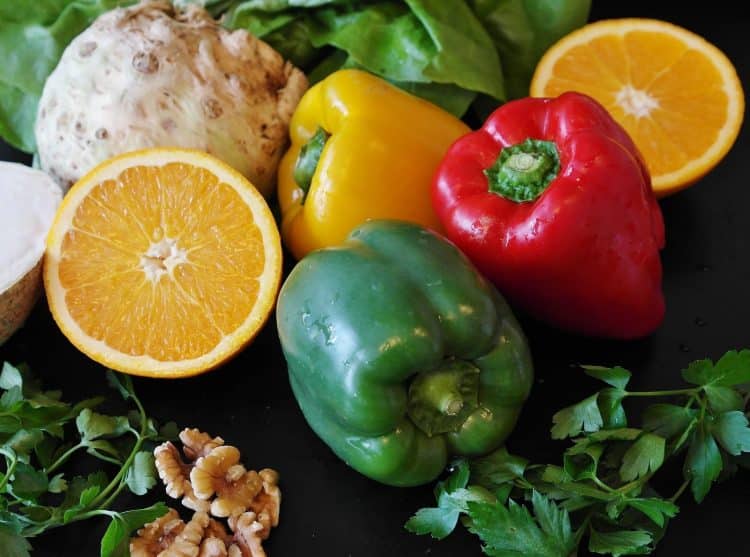Like terpenes, flavonoids are gaining popularity and recognition among the key molecules behind plants’ mysterious powers, despite their generally low levels. And like terpenes, their antioxidant properties are of particular interest.
Rapid advancements in extraction technologies give extractors the means to target flavonoids and harness their potential in full. In that spirit, a team of researchers from Bulgaria conducted an overview of “the common problems and key challenges in extraction procedures, as well as various mechanisms for selective extraction of flavonoids from different plant sources.” [1] They undertook this task in hopes to pin down the optimal flavonoid extraction methodology.
Spoiler alert: there isn’t one, or a single one. Rather, the optimal extraction method depends on the specific flavonoid and the purpose that the extract is meant to fulfill, as well as the scale of the operation, time, money, etc. “There is no universal extraction method, and each optimized procedure is individual for the respective plants. For an extraction technique to be selective, it must combine an optimal solvent or mixture of solvents with an appropriate technique.”
Identifying the plant and the application of the flavonoid extract are the two starting points on the path to optimal selective extraction.
Sample Preparation
Once you have the aforementioned foundation down, it’s time for sample preparation such as drying, grinding, and defatting.
Drying can take place via air, microwave, oven, and freezing. The choice depends on the flavonoid, its thermal stability (or lack thereof), and what would minimize the degradation that generally occurs during this phase.
“Air-drying usually takes a long time but does not need any lab equipment, and the heat-labile compounds are preserved. For that reason, shade-drying was preferred by many researchers.”
Grinding particles to less than 0.5 mm can improve extraction efficiency. The lipophilic compounds (fats) may be removed with an “additional cleaning procedure” depending on intended application.
Extraction Procedure
The extraction procedure exists as part of an equation with different variables, such as the fraction’s polarity, flavonoids’ thermal stability, amount of extract required, and available equipment.
For example, more polar flavonoid fractions generally require alcohol or an alcohol-water mixture. Temperature and light must be in accord with flavonoids’ thermal lability.
Finally, there’s the extraction technique, which falls in one of two categories: “Conventional techniques (maceration, reflux, and Soxhlet extraction) and modern [green] techniques (extraction by ultrasound, microwaves, pressurized liquid, supercritical fluid, enzyme assistance, matrix solid-phase dispersion, etc.).”
Conventional
Conventional methods are universal, effective, and user-friendly, but this comes at the cost of selectivity. Furthermore, they have shortcomings, such as “a long extraction time, a requirement of costly solvent, evaporation of a huge amount of solvent, low extraction selectivity, and… are difficult to be automated.”
The researchers cite total flavonoid extraction from Cosmos caudatus (ulam raja, “king’s salad”) [2] and Moringa oleifera (drumstick tree) [3] with 70% ethanol in water as examples of conventional methodology.
Modern (Green)
By their modern and green definitions, these techniques are more sophisticated and tailored to spare both the environment and extractors’ time and energy. They reduce organic solvent consumption and sample degradation while increasing efficiency and selectivity; decrease or even prevent pollution altogether; eliminate “additional sample clean-up and concentration steps”; not to mention, they provide room for automation.
Examples of green extraction include total flavonoids from orange peels using ethanol and water (4:1) with ultrasound-assisted extraction [4]; anthocyanins from red grapes using water with pressurized hot water extraction [5]; and total flavonoids from maritime pine with supercritical carbon dioxide and 10% ethanol [6]. [1]
Bottom line is, in the case of flavonoid extraction, the destination determines the journey rather than the other way around.
References:
- Tzanova M, et al. Selectivity of current extraction techniques for flavonoids from plant materials. 2020;8(10). [Impact Factor: 2.753; Times Cited: n/a]
- Mediani FA, et al. Cosmos caudatus as a potential source of polyphenolic compounds: Optimisation of oven drying conditions and characterisation of its functional properties. Molecules. 2013;18:10452–10464. [Impact Factor: 3.267; Times Cited: 31 (Semantic Scholar)]
- Vongsak B, et al. Maximizing total phenolics, total flavonoids contents and antioxidant activity of Moringa oleifera leaf extract by the appropriate extraction method. Ind Crops Prod. 2013;44: 566–571. [Impact Factor: 4.244; Times Cited: 262 (Semantic Scholar)]
- Khan MK, et al. Ultrasound-assisted extraction of polyphenols (flavanone glycosides) from orange (Citrus sinensis L.) peel. Food Chem. 2010; 119:851–858. [Impact Factor: 6.306; Times Cited: 470 (Semantic Scholar)]
- Ju ZY, Howard LRE. Effects of solvent and temperature on pressurized liquid extraction of anthocyanins and total phenolics from dried red grape skin. J Agric Food Chem. 2003;51:5207–5213. [Impact Factor: 4.192; Times Cited: 284 (Semantic Scholar)]
- Braga ME, et al. Fractioned SFE of antioxidants from maritime pine bark. J Supercrit Fluid. 2008;47:37–48. [Impact Factor: 3.744; Times Cited: 46 (Semantic Scholar)]











